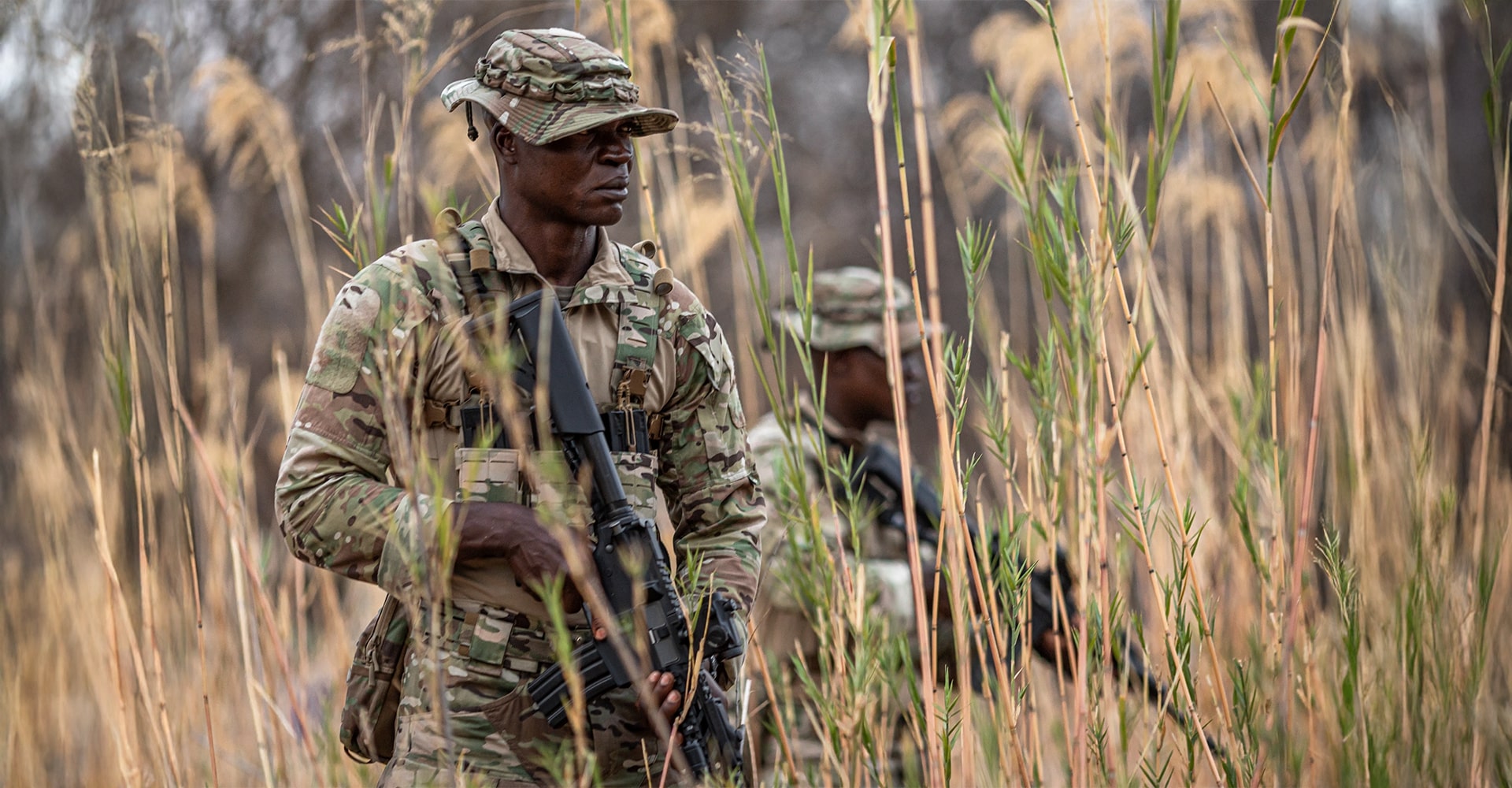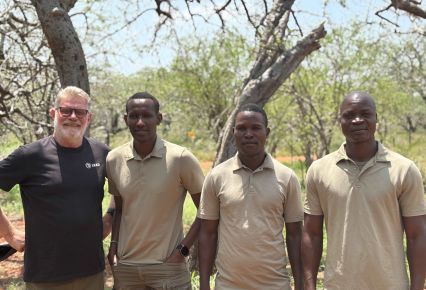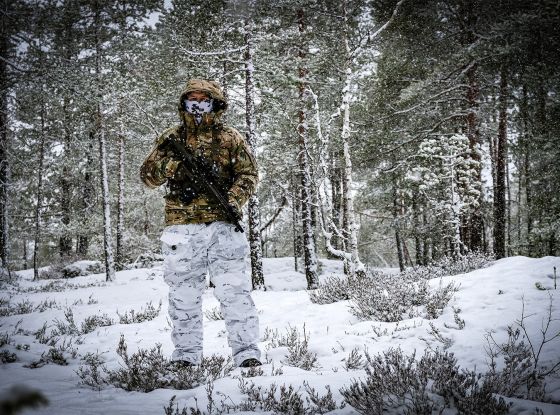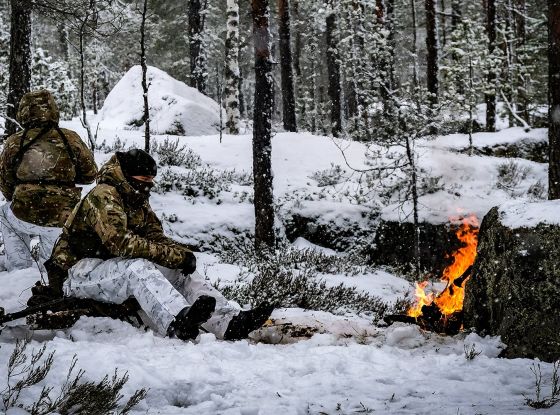A day in the life of a park ranger unfolds in an unpredictable rhythm, balancing routine preparation with the ever-present uncertainty of the wild. Written by four park rangers working with LEAD Conservation, this blog offers a firsthand look at the challenges they face. From the calm of dawn in the bush to the urgent chaos of saving wildlife and facing human-wildlife conflicts, each moment is shaped by instinct, awareness, and the mission to protect endangered species.
In this blog post:
With the constant threat of poachers and the pressing realities of conservation, the work demands more than just skill—it requires a deep connection with the land, a readiness to act at a moment’s notice, and the courage to face the unknown. This is not just a job. It's a relentless commitment to the survival of both wildlife and those dedicated to its protection.
By LEADs Ruben de Kock, Kizito Lomongin, Paul Chikumbutsu, and Jackson Mutabazi
Dawn in the Bush, Day Two of the Patrol
The day begins before the sun rises—03:15 AM. The air is crisp, still untouched by the first light of dawn. I pause, lying motionless, taking in the stillness. My kit is still dry—a small but important mercy. The night before, we camped in a shelter, surrounded by walls, with everything in order. This morning, it’s different. The uncertainty of the bush is here again.
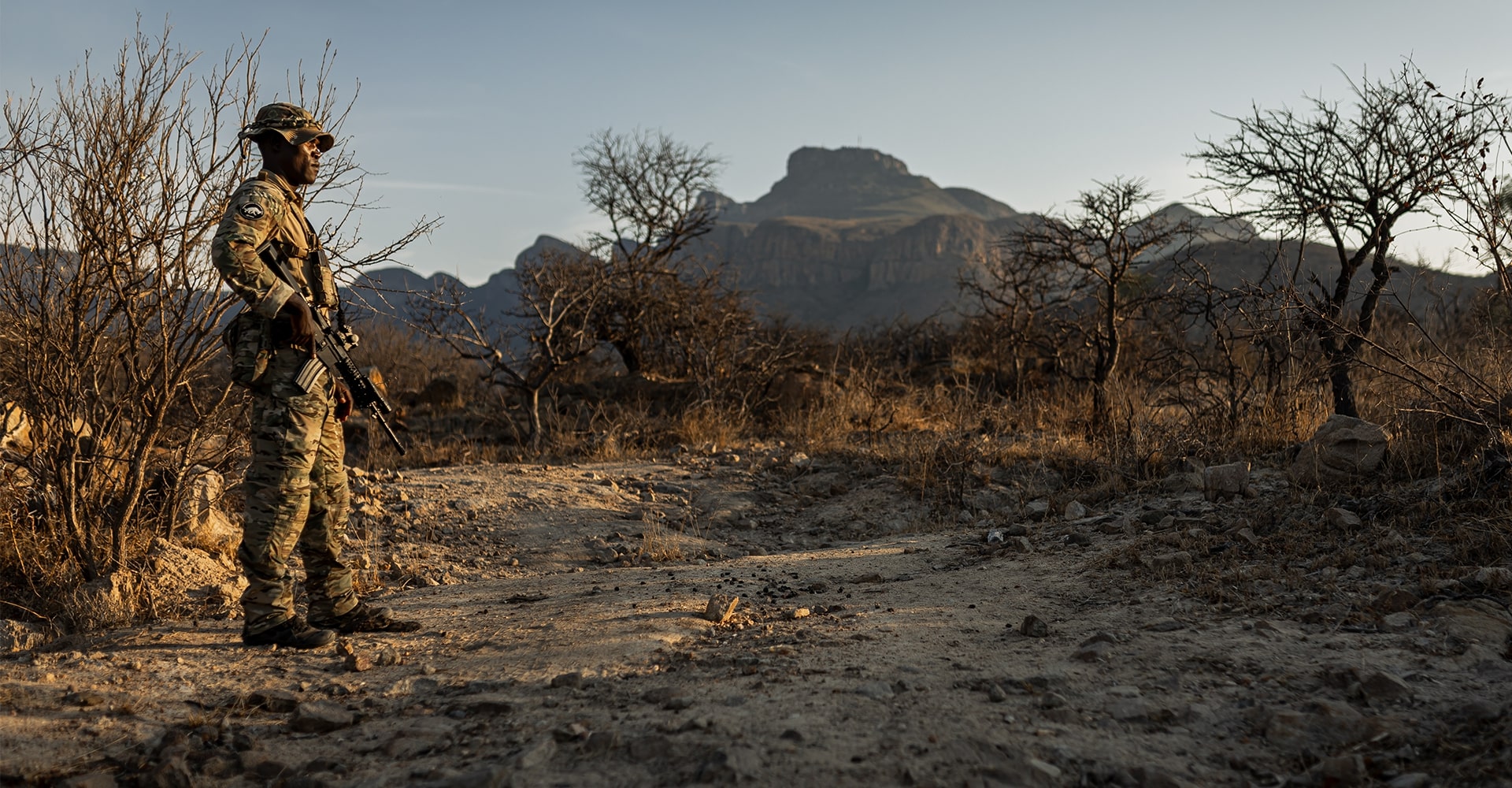
Yesterday began with clarity and ritual. Orders received. Maps studied. Rations and water meticulously prepped. First, you check yourself: boots clean, weapon spotless, pack secured—heavy items high, spares at the bottom. Then, you check each other, ensuring no loose straps or buckles that might betray your movement with the slightest noise. Radios were synced, comms checked, and the risks weighed.
Yet, some risks defy preparation. Last week, we learned this the hard way.
Lessons from the Lioness
Four hundred pounds of muscle and fury materialized from the tall grass—a lioness, her cubs hidden nearby. One moment, the savanna stretched out in serene silence. The next, she was upon us, charging with ears pinned, tail lashing, and a growl that shook the ground beneath us.
No hesitation. No bluff. Pure, raw intent.
As a park ranger, you learn to read the landscape—both human and animal. There’s no room for diplomacy in a moment like that. You could try reasoning with her—explaining you’re here to protect her home—but she doesn’t care. We had crossed an invisible line, and she was letting us know.
We stood firm. Didn’t flinch. And after what felt like an eternity (though it was likely seconds), she stopped. A final growl, one last warning, and she was gone—disappearing into the grass as if she’d never been there.
Too close. But out here, regret is a luxury we can’t afford.
Reading the Land: The Tracker's Mindset
A good patrol starts long before boots hit the ground. It’s about more than just walking the land—it’s about reading it. Our area of operations isn’t just breathtaking savanna. It’s a sanctuary, one of the last bastions of the critically endangered Grevy’s zebra. Every track, every footprint matters. Being a park ranger isn’t just about taking action; it’s about understanding the environment.
For a deeper look at how tracking is done, explore the Pro’s Guide to Tracking with Rangers and K9s four-part series, where rangers and their K9 partners hunt for poachers in the heart of Africa.
Yesterday’s mission was straightforward: patrol the zone, check the camera traps, and inspect known hotspots. Step by deliberate step, we moved through the bush—eyes scanning for signs, ears straining for distant gunfire or the faint glint of a wire snare.
Every patch of soft earth tells a story. Animal tracks. Human tracks. A trampled bush where none should be. A tracker’s mind is a library of these clues, cataloging them, interpreting them. When we find human tracks where they shouldn’t be, the mission shifts immediately. We follow.
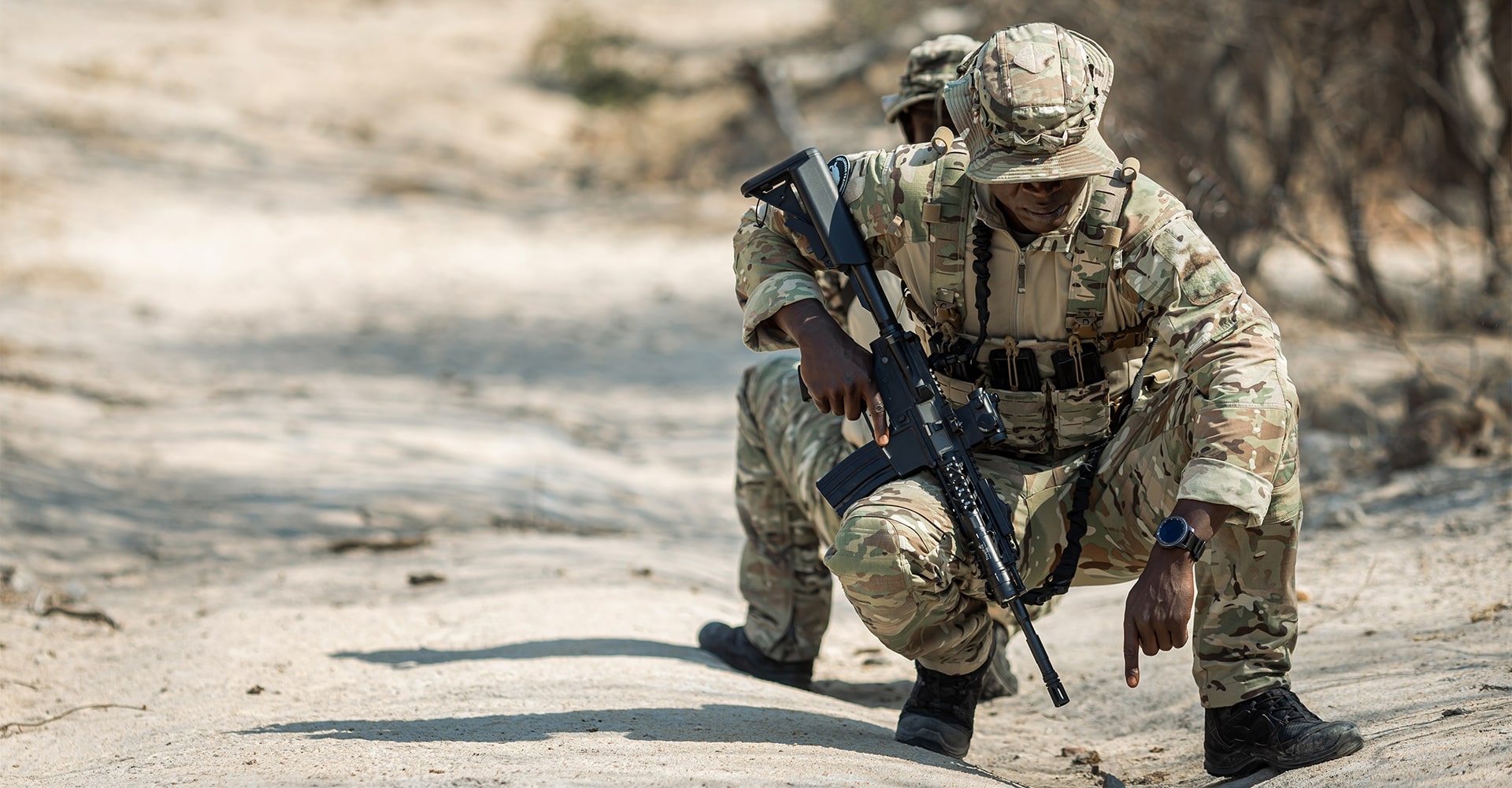
And sometimes, following puts you in the crosshairs.
When the Hunt Finds You
Weeks ago, a shotgun blast erupted ahead of me. Sand and dust slammed into my chest, followed by the deafening thump of the shot. Instinct took over. Shouts. Dash. Down. Crawl. Observe. Sights up. Return fire.
The poachers had the advantage of cover, but they were using old bolt-action rifles—heavy, slow, cumbersome. Our firepower was faster, more precise. Within minutes, they were suppressed, detained, disarmed, and being marched to the nearest ranger post.
The adrenaline, though—that stayed longer. It always does. You tell yourself you’re prepared, that you know this is part of the job, but every time it happens, something changes. The lesson is welded into you.
Awareness isn’t just about seeing the track in front of you. It’s about feeling the world around you, stretching your senses to catch the thing lurking just outside your line of sight. Some contacts, you survive. Some, you don’t. This is conservation in the 21st century—where heavily armed men fight over animals, whether for profit or survival. And if you don’t see it coming, you’re part of the landscape before you even know you’ve fallen.
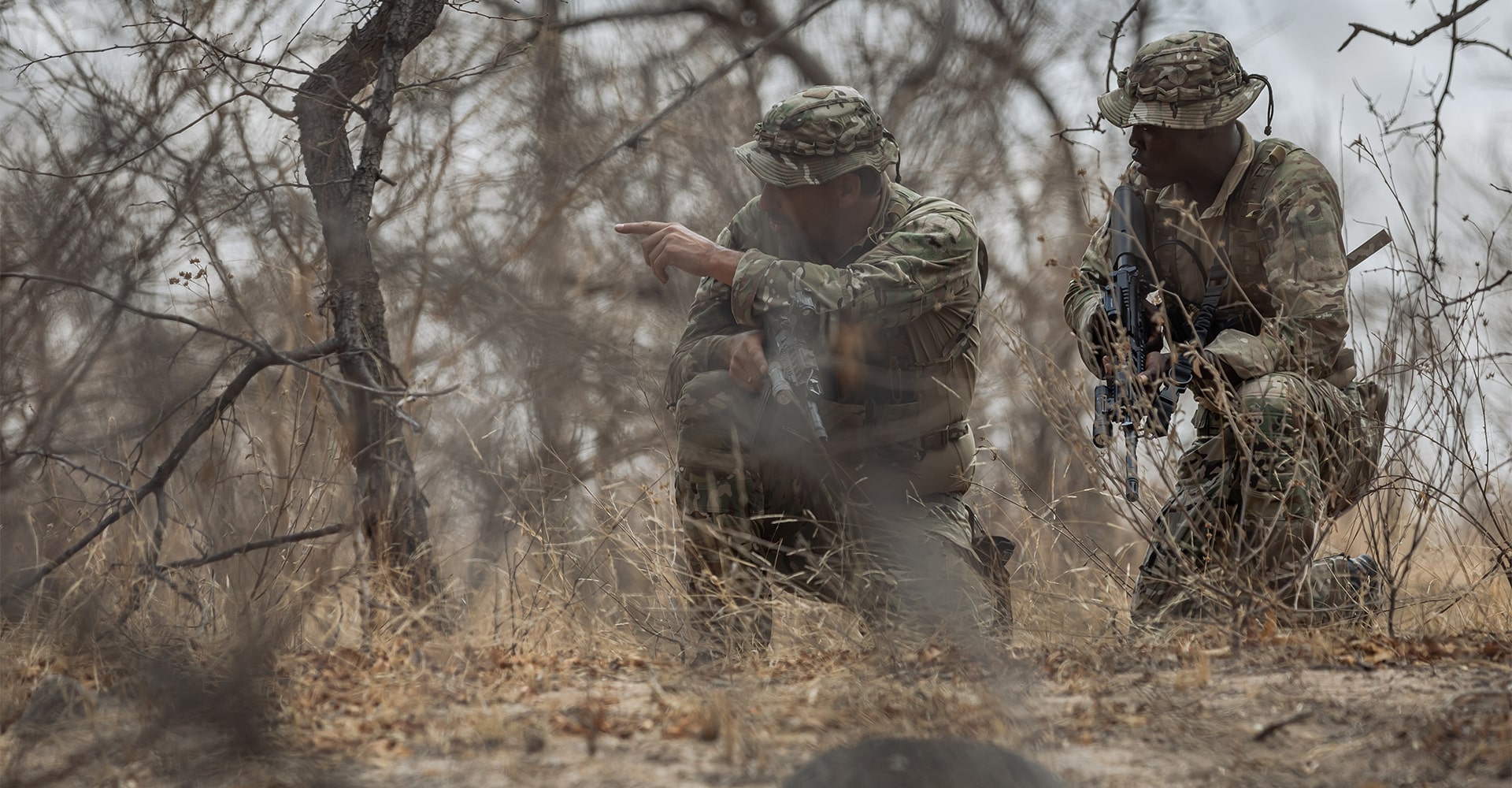
A Park Ranger's Morning Routine: Day Two Begins
Gear secured, weapons checked, we move through the darkness. Our first task is finding a safe spot for breakfast.
In a quiet clearing, we pause as the land begins to stir. The birds break the night’s silence first, their calls layering over one another in a slow crescendo. Then the distant rustle of animals stirring, hooves pressing into damp earth. The morning belongs to them. For now.
By first light, aerial support is up. It will sweep ahead of us, helping locate the Grevy’s zebra so we can do an assessment. Are they healthy? Is the land providing enough food? Are there any threats nearby? Aerial support is a game-changer, allowing us to cover ground more efficiently. And if we do find poachers, the plane will help box them in, cutting off their escape routes.
SUBSCRIBE TO UNLOCK OUR EXCLUSIVE CONTENT
Enter your email and get timely updates and relevant intel on tactical topics directly to your inbox.
You are signing up to receive updates via e-mail from which you can opt out at any time. Visit our privacy policy for more info.
We finish eating just as something shifts in the air.
A sound—wrong, urgent.
A thrashing in the bush. Then an alarm call.
A Fight Against Time: Rescuing the Impala
We’re on our feet instantly, moving toward the source, senses sharpened. The landscape has its own rhythm, and when that rhythm is disrupted, you pay attention.
No human voices. That’s a relief. But what we find still puts us on edge—a fully grown impala, thrashing wildly, a snare locked tight around its neck. It’s fresh. No cuts yet, no deep wounds. We can still save it. As a park ranger, you're often caught between the instinct to save the animal and the awareness of the danger that surrounds you.
The next few minutes are chaos.
Two of us wrestle the impala, struggling to subdue it. A terrified antelope is a weapon in its own right—sharp hooves, dagger-like horns, muscles coiled with panic. A misstep here can end in punctured flesh.
Our team leader moves in, multi-tool in hand, sawing through the steel cable. Seconds stretch. Then—the wire snaps. The impala hesitates, muscles tensed, then bolts into the bush, vanishing as quickly as it appeared.
We dust ourselves off and reset. Another day, another fight against an unseen enemy.
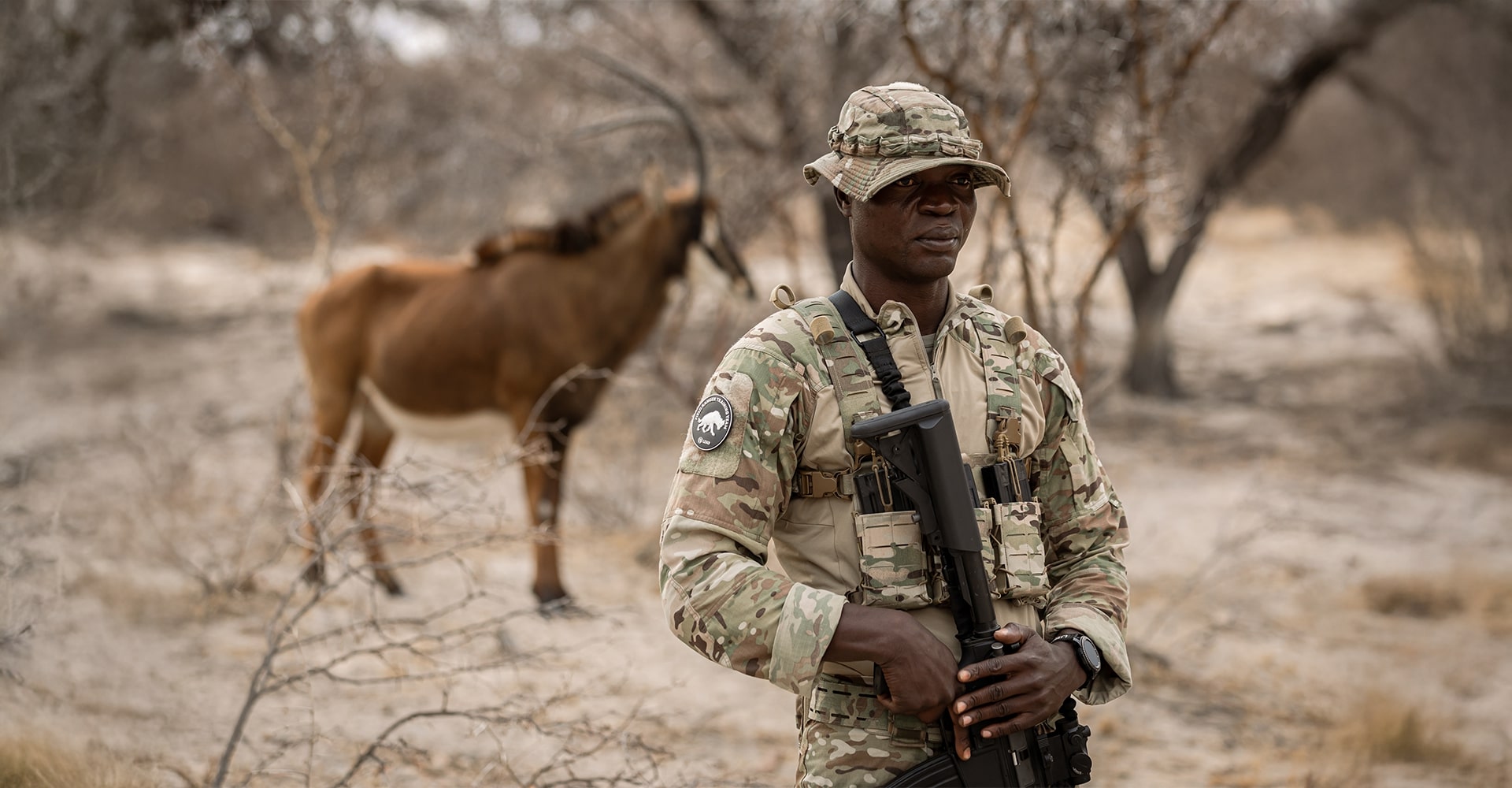
Aerial Support
The aircraft sweeps ahead of us, guiding our movements as we search for the Grevy’s zebra. When we find them, relief washes over us—healthy, alert, with no signs of distress. Photos are taken. Notes are logged. Every observation shapes tomorrow’s patrols.
Then, the plane radios in. New intel. “Human-wildlife conflict situation, 1.5 klicks east.”
We move without hesitation. This is close to the boundary, a flashpoint where protected land meets the reality of human settlement. When we arrive, the scene is all too familiar. A lone bull elephant has wandered into a maize field, trampling through what represents weeks of survival for the local villagers. Fear and frustration radiate from the crowd.
We act quickly, using noise and movement to guide the elephant back into the reserve. He resists—trumpeting in defiance—but eventually retreats. The villagers thank us, though their voices betray a lingering frustration. This isn’t the first time, and it won’t be the last.
We offer solutions—beehives along the boundary, chili-based repellents—but change comes slowly here.
13 Kilometers Later: The Park Ranger's End of Day
By the time we reach our night location, fatigue sets in. A quick meal. Quiet conversation. Then we bed down under the stars.
The night sounds take over—the distant roar of a lion, the yipping of jackals. We did good work today. We found the zebras. Removed a snare. Guided an elephant to safety.
It doesn’t always feel like enough, but it’s something.
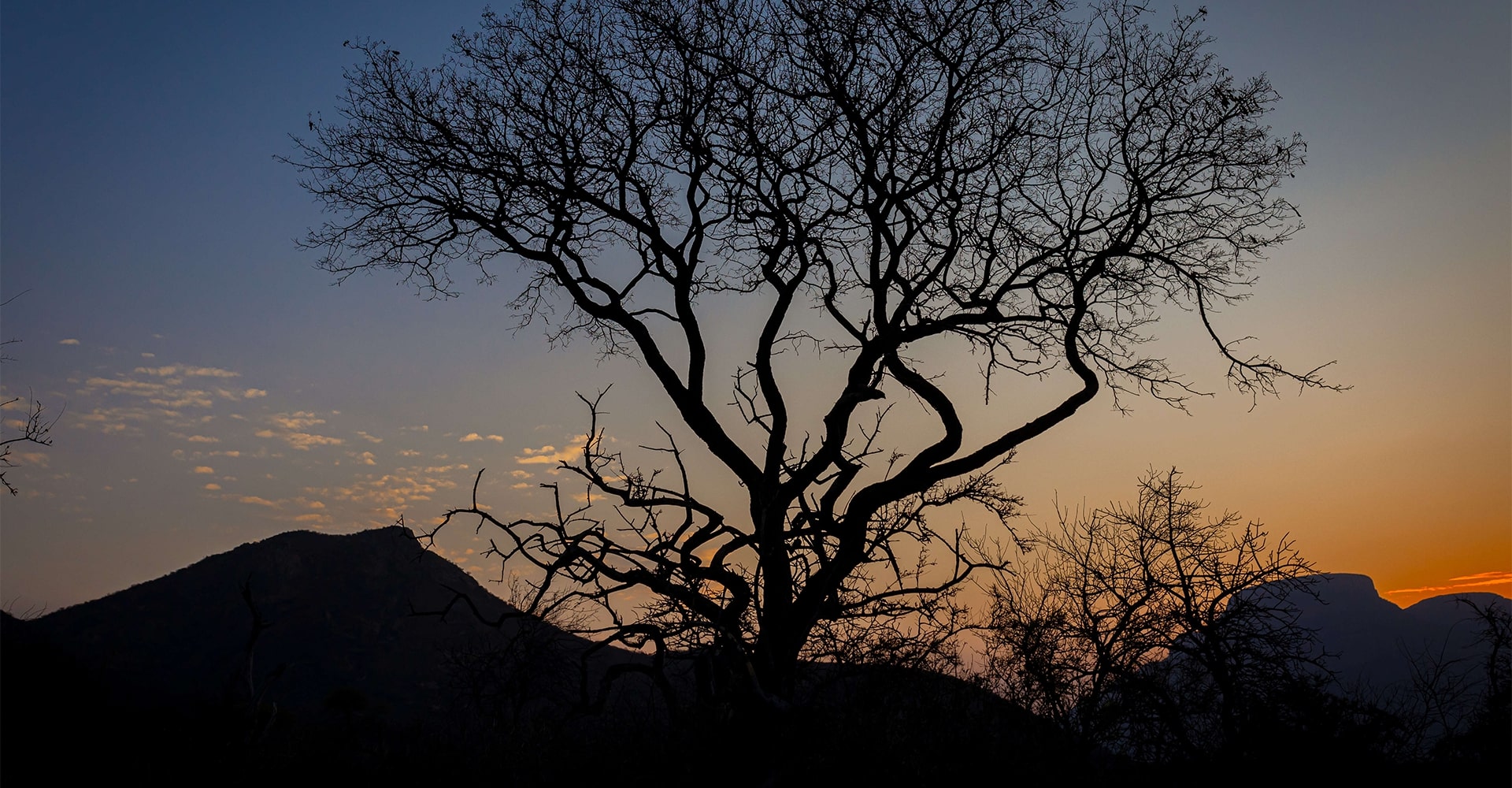
As I stare at the endless expanse above, I think about tomorrow. The challenges. The risks. The unknown.
Maybe we’ll cross paths with a lioness again.
Maybe we’ll track signs of humans where they shouldn’t be.
Maybe we’ll all make it back.
For now, I close my eyes. Guard duty in two hours. Another day in the life of a park ranger.

